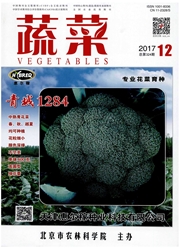

 中文摘要:
中文摘要:
为了进一步了解抗生素在土壤—蔬菜系统中的迁移过程与规律,以四环素(tetracycline,TC)为目标抗生素,采用水培蔬菜的方式,通过测定根际暴露24 h内上海青、木耳菜和大白菜叶中TC含量的变化,计算叶的TC累积速率;对比根际暴露24 h后TC在植物体不同部位中的含量分布,研究了TC的迁移规律。结果表明,水溶液中的TC能够被蔬菜根部快速吸收并传输到叶片,根际暴露1 h内即可在叶中检出较高含量的TC,且3种蔬菜叶中TC的累积速率随暴露时间增加而降低。蔬菜对TC的吸收累积能力与种类有关,试验条件下木耳菜对TC的吸收和传输能力均远大于大白菜和上海青。根部在蒸馏水和根际液配制的含TC营养液中分别暴露24 h后,上海青根中TC含量大于叶中含量,而木耳菜和大白菜叶中TC含量均大于根,植物根际分泌物可能影响TC向植物中迁移。
 英文摘要:
英文摘要:
To understand the migration processes and rules of antibiotics in the soil-plant system further, measuring the change of tetracycline(TC) by three kinds of vegetable(pakchoi, malabar spinach and Chinese cabbage) which cultivated with nutrient solution within 24 hours. Calculating the accumulation rate of TC in leaves. Comparing concentration distribution of TC in different parts of vegetable after rhizosphere exposurein in 24 h, and the migration of TC was studied. The results showed that TC in solution could be absorbed by vegetable roots and be transported to leaves quickly, high concentration of TC could be detected after 1 hour root exposure to nutrient solution within TC in three kinds of vegetable leaves, and the accumulation rates of TC were decreased with time increasing in three kinds of vegetable leaves. After root exposure to nutrient solution with TC for 24 hours, malabar spinach was more efficient in TC uptake and translocation than pakchoi and Chinese cabbage, the accumulating ability was connected with species. When TC nutrient solution contaminated with TC were prepared with distilled water or rhizosphere solution, the concentration of TC in different parts of pakchoi were: rootleaf after root exposure for 24 hours; while the concentration of TC in leaves was greater than roots to Chinese cabbage and malabar spinach. The root exudate may affect the migration of TC to plants.
 同期刊论文项目
同期刊论文项目
 同项目期刊论文
同项目期刊论文
 期刊信息
期刊信息
